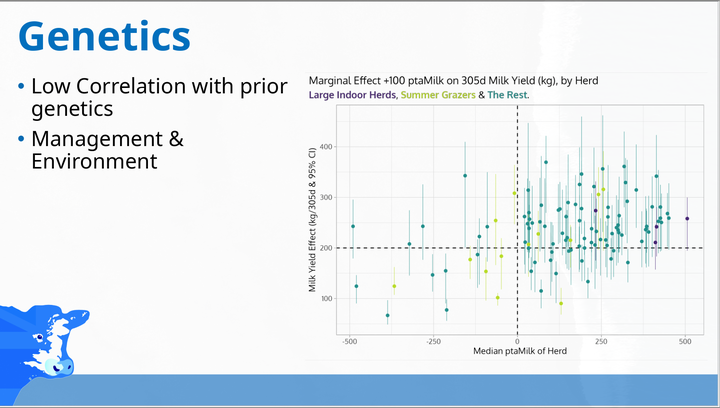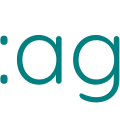
Abstract
This conference presentation outlined a small part of a large-scale research project. The project itself used data from more than 200 UK dairy herds, and aimed to tease apart the various effects on milk production at the herd, group and cow level, to allow advisors to better identify the most important effects and predict the economic results of management decisions.
Tailored to suit the audience, after a brief description of the method, this talk used the fitted model to answer some fundamental questions:
- By how much are non-seasonal UK herds affected by seasonality in milk production, and what may be the most important causes?
- Which herds have the most to gain from further investment in genetic merit, and on which herds is genetic expression being restricted by non-genetic bottlenecks?
- Independent of replacement rate, can we identify herds where replacement strategy is negatively affecting welfare & production?
- Can milk production data be used to identify herds which are not calving heifers at a herd specific optimal bodyweight? Can it also be used to identify the likely reason?
- Do poorly-performing cows improve in future lactations?
- What early-lactation milk production targets should each herd use in order to achieve their target performance level?
This project used advanced modelling techniques, near-realtime analysis and large-scale cloud compute infrastructure. To quote Prof. Andrew Gelman: “Big Data needs Big Model.”
Date
Oct 21, 2022 4:00 PM
Event
